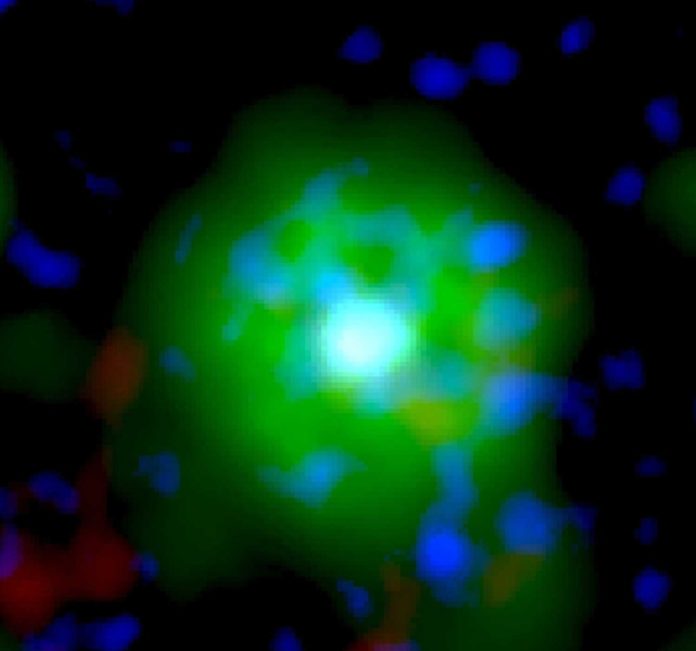Using ESA’s XMM-Newton X-ray telescope, a team of astronomers recently studied an object originally discovered in 2019. At that time, the object was found to have very high wind speeds.
Hot start observations with a spectrum dominated by emission lines located at the center of a circular mid-infrared nebula. The widths of the emission lines imply that wind material leaves the star with an outflow velocity of 16,000 kilometers per second and that rapid stellar rotation and a strong magnetic field aid the wind acceleration.
The object called IRAS 00500+6713 is a merger of two white dwarfs (WDs), consisting of a central star embedded in a circular nebula.
In a new study, Lidia Oskinova of the University of Potsdam and her team studied the object, suggesting that the star is a new type of X-ray source powered by the merger of two white dwarfs.
The above image shows a new type of star that has never been seen before in X-ray light. The remnant of the clash – the nebula – is also visible in this image and is mostly made out of the element neon (shown in green). The star is very unstable and will likely collapse into a neutron star within 10 000 years.
Astronomers noted, “This strange star formed after two white dwarfs – remnants of stars like our Sun – collided and merged. But instead of destroying each other in the event, the white dwarfs formed a new object that shines bright in X-ray light.”
Journal Reference:
- Lidia M. Oskinova et al. X-rays observations of a super-Chandrasekhar object reveal an ONe and a CO white dwarf merger product embedded in a putative SN Iax remnant⋆. DOI: 10.1051/0004-6361/202039232
